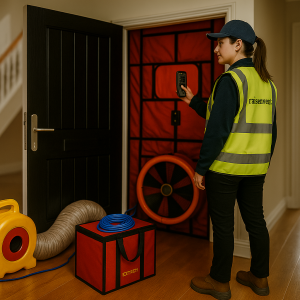Air Permeability Strategies for Passive Solar Design
Passive solar design is a crucial element of creating energy-efficient buildings. One of the key factors that influence the efficiency of passive solar buildings is air permeability. Proper strategies to control air permeability can significantly enhance the thermal performance of a structure. This article will delve into air permeability strategies for passive solar design and how they impact passive solar buildings.
Understanding Air Permeability in Buildings
Air permeability, also known as air tightness, refers to the amount of air leakage into and out of a building. It is an essential factor in energy-efficient buildings because uncontrolled air leaks can lead to heat loss, increased energy consumption, and discomfort for occupants. In the context of passive solar design, controlling air permeability ensures that the building captures and retains solar energy effectively without losing it through unintended gaps and cracks.
Effective Sealing Techniques
One of the primary strategies to control air permeability in passive solar buildings is to implement effective sealing techniques. This involves identifying and sealing potential leakage points such as windows, doors, and service penetrations. High-quality weatherstripping and caulking can significantly reduce air leakage. Moreover, ensuring that all joints and seams in the building envelope are properly sealed is crucial. By minimising these leakage points, the building retains more heat during the winter and stays cooler in the summer, enhancing the overall energy efficiency.
Importance of Proper Insulation
Proper insulation goes hand in hand with air permeability control. Insulating a building reduces the need for heating and cooling by providing a thermal barrier that limits heat transfer. In passive solar buildings, high-performance insulation materials should be used to ensure minimal heat loss. Insulating the roof, walls, and floors effectively stops heat from escaping through the building envelope. This strategy works in tandem with air sealing techniques to create a more airtight and energy-efficient structure.
Utilising Airtight Construction Methods
Airtight construction methods are integral to managing air permeability in passive solar buildings. Techniques like the use of continuous air barriers, taped sheathing, and membrane systems are effective in creating an airtight building envelope. An airtight construction ensures that the building only exchanges air through controlled ventilation systems, rather than through leaks. This not only improves thermal performance but also contributes to indoor air quality by allowing better control over the airflow.
Implementing Controlled Ventilation Systems
While airtightness is essential, it is equally important to incorporate controlled ventilation systems. Passive solar buildings must maintain good indoor air quality. Mechanical ventilation systems, such as heat recovery ventilators (HRV) or energy recovery ventilators (ERV), are designed to replace stale indoor air with fresh outdoor air while minimising heat loss. These systems ensure that the building remains breathable without compromising its airtightness, thus achieving a balance between energy efficiency and occupant comfort.
Monitoring and Testing Air Permeability
To ensure the effectiveness of air permeability strategies, regular monitoring and testing are necessary. Blower door tests are commonly used to measure the air tightness of buildings. These tests help identify any areas of concern and ensure that the building meets required standards for airtightness. By conducting these tests during and after construction, builders and architects can address any issues promptly and ensure that the building performs as intended.
The Role of Design in Air Permeability
The design of passive solar buildings plays a significant role in controlling air permeability. Factors such as the building’s orientation, window placement, and shading devices can influence air tightness. Design strategies that reduce the number of penetrations and joints in the building envelope contribute to better air tightness. Additionally, integrating design elements like atriums and sunspaces can help manage airflow and enhance the building’s thermal performance.
Conclusion
Air permeability control is essential for the success of passive solar designs. By implementing effective sealing techniques, proper insulation, airtight construction methods, and controlled ventilation systems, the air permeability can be managed effectively. Regular monitoring and testing ensure ongoing performance, while thoughtful design choices further enhance the building’s airtightness. Together, these strategies create energy-efficient, comfortable, and sustainable passive solar buildings.




